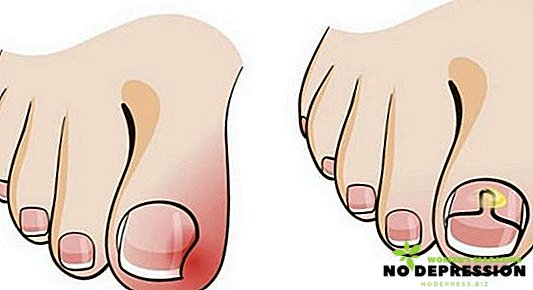Chlamydia are microscopic organisms belonging to bacteria. There are many types of them, including those that can parasitize on the human body.
The disease caused by these microorganisms is called chlamydia. Chlamydia affects the mucous membranes of a person, most often it occurs on the genitals.

What is chlamydia, how does the infection occur?
The causative agent of chlamydia is the bacterium Chlamydia trachomatis. It can live on the mucous membrane of the genital tract, oral cavity, respiratory tract, eye conjunctiva. The peculiarity of the pathogen is that chlamydia is an intracellular parasite.
It has more complex organization than viruses and does not involve the host cell in its DNA reproduction process, but its size allows it to dwell inside the cytoplasm of the cells and avoid exposure to many antibiotics.
The main ways of transmitting the disease are sexual and vertical (from mother to child). The first way leads to a rather wide spread of infection among the sexually active population, the second one causes the most severe consequences.
The disease can be transmitted through oral sex and kisses. At the same time, for chlamydia the airborne and contact-household route of infection is not typical, therefore being in the same room with a patient is not dangerous.

Common symptoms of chlamydia in men and women
A dangerous feature of chlamydia is that its course can be asymptomatic for a long time. According to statistics, in half of the cases (more often in women), the disease is detected by chance during the examination for some other reason.
In men, a similar situation is possible with the diagnosis of prostatitis, urethritis or male infertility. And just as in half of the cases, the course of the disease is asymptomatic.
If the symptoms of the disease still appear, they are often not specific. In women, these are typical signs of vulvovaginitis, cystitis, less commonly cervicitis and endometritis. In men - signs of urethritis, prostatitis, balanoposthitis.
All these states have symptoms characteristic of the inflammatory process in a certain area, and it is impossible to establish that the causative agent was chlamydia, without tests.

Common symptoms include itching and burning in the genital area, discomfort during urination and sexual intercourse, redness of the skin and mucous membrane in the affected area, the appearance of discharge. They are transparent, white in color and glassy in appearance.
How chlamydia occurs in women: the first signs
The first signs of chlamydia usually appear 7-14 days after infection. The disease manifests discomfort in the genital tract, reddening of the skin of the labia, itching and burning. These symptoms appear rather weakly, therefore they are often ignored by patients.
Vaginal discharge is glassy transparent, white or yellowish with an unpleasant odor. The intensity of the discharge is different - in the first month of the disease they can be abundant, smell sharply. But then the inflammation subsides, and an illusion of recovery is created.
 These manifestations, especially in the early periods of the disease, may be accompanied by low-grade fever, abdominal pain, deterioration of health, but these manifestations do not always occur.
These manifestations, especially in the early periods of the disease, may be accompanied by low-grade fever, abdominal pain, deterioration of health, but these manifestations do not always occur.
The disease is chronic, with periods of exacerbation and remission. Usually the first aggravation is the most intense, then the severity of the symptoms decreases.
The danger of such a course is that the exacerbations subside on their own, which gives the patient a false assurance that he is healthy. In this case, the infection persists, the disease progresses, and the patient suffering from chlamydia is the source of infection for his sexual partners. This applies equally to men and women.
Chlamydia in women: diagnosis
Tests that identify chlamydia, appoint a gynecologist. Examination of the female genital organs does not provide an exhaustive picture - to make a diagnosis, it is necessary to identify the pathogen. Screening method is a smear for the degree of purity - this is the main analysis, which gynecologists prescribe for all patients.
It allows you to notice violations of the natural microflora of the vagina as a whole, but not to identify a specific pathogen. With chlamydia, this analysis will show a third or fourth degree of purity.
 To identify the actual pathogens using several methods. The most accurate of them is PCR, which allows to reliably determine the presence of chlamydia in a smear. The method is distinguished by high sensitivity and specificity; it rarely gives false-positive or false-negative results.
To identify the actual pathogens using several methods. The most accurate of them is PCR, which allows to reliably determine the presence of chlamydia in a smear. The method is distinguished by high sensitivity and specificity; it rarely gives false-positive or false-negative results.
Other methods used - ELISA, which is based on the detection of antibodies to chlamydia and immunofluorescence - smear microscopy, which allows you to see the pathogens. The accuracy of these methods is lower than that of PCR, but they are cheaper and more accessible, so they do not lose their relevance.
Bacteriological sowing is necessary in order not only to identify chlamydia (this process takes time), but also to determine their sensitivity to antibiotics and the selection of the most appropriate drug.
Chlamydia treatment in women
The basis of the treatment of chlamydia, as well as any bacterial infection, is antibiotics. In this case, the macrolide, fluoroquinolone and tetracycline drugs will be effective.
 The choice of a particular drug depends on the results of bacteriological seeding and determining the sensitivity of the pathogen. Duration of treatment is about 3 weeks. It is very important to observe the mode of receiving antibiotics.
The choice of a particular drug depends on the results of bacteriological seeding and determining the sensitivity of the pathogen. Duration of treatment is about 3 weeks. It is very important to observe the mode of receiving antibiotics.
Additionally, antifungal suppositories are prescribed. This is necessary because antibiotics violate the normal microflora of the vagina, and parasitic fungi can take its place, thrush will develop. For the prevention of candidiasis Nystatin is used - it is convenient for long courses of treatment.
Also used immunomodulatory drugs, multivitamin complexes, if necessary - enzymatic means that support digestion and drugs that restore the intestinal microflora. Chlamydia treatment takes a lot of time and requires a large financial cost from the patient.
Regime and proper nutrition
The treatment regimen and nutrition can significantly increase the effectiveness of treatment. Moreover, if these measures are not followed, drug treatment loses its effectiveness, the process is delayed, and there is a risk of its transition to the chronic form. That is why it is so important to pay attention to the kind of lifestyle the patient leads.
The most important thing that she needs to do is refrain from any sexual contact during treatment. This also applies to oral and anal sex - there is a risk of infection in this case too. In the future, it is necessary to avoid unprotected contacts with partners, in whose health a woman is not sure.
Also, when detecting chlamydia in a woman, it is necessary to examine and treat her permanent sexual partner (or all partners, if there are several of them).
This is necessary because the symptoms of the disease do not appear immediately, but may not appear at all, but an infected person is a danger to their loved ones.
In terms of nutrition is to focus on easily digestible foods rich in vitamins. Dairy products and cereals with milk, dietary meat and fish, vegetable dishes will be useful.
Fresh vegetables and fruits, as well as pastries, white bread and legumes, should be avoided, as they provoke fermentation processes in the intestines, which is very dangerous in terms of dysbacteriosis during treatment with antibiotics.

Chronic chlamydia in women: symptoms, type of discharge, treatment
Chlamydia is almost always prone to a chronic course. During exacerbations appear redness of the mucous membrane of the labia, the pain and discomfort during intercourse, up to the complete inability to have sex. Vaginal discharge have a yellowish or light brown color and an unpleasant fishy smell.
The intensity of symptoms during an exacerbation varies depending on the condition of the woman.
Exacerbations are provoked by hypothermia, the common cold, exacerbations of chronic diseases, and stress. Often the first signs of exacerbation appear during intercourse. During remission, the symptoms are completely absent, and the patient can be sure that she is completely healthy.
Chlamydia during pregnancy
During pregnancy, chlamydia creates additional risk factors for the baby. Exacerbation of chlamydia in the early stages of pregnancy can lead to severe pathologies in the baby, in the later stages - to premature labor. In addition, the inflammatory process adversely affects the state of the vaginal mucosa, and during childbirth increases the risk of rupture.
For a baby, birth from a sick mother threatens with congenital chlamydia of the eyes and respiratory tract. These are dangerous conditions that can lead to blindness or death. Even those babies whose mothers have a disease are asymptomatic are at risk.
To reduce the risk of complications, it is necessary to be examined for chlamydia and other sexually transmitted infections when planning a pregnancy.
In family planning centers it is mandatory to issue directions for all the necessary tests. Moreover, the analyzes need to go to both future parents, not just the mother.
Possible consequences
Chlamydia of the genital tract itself is not dangerous and only delivers relatively mild discomfort. But if it is not treated for several years, a rising infection gradually develops - the mucous membrane of the cervix and the body of the uterus, and then the fallopian tubes, are involved in the pathological process.
Chlamydial endometritis causes menstruation to become painful and profuse. The same condition is one of the causes of endometriosis - a pathological proliferation of the inner layer of the uterus.
Another consequence of endometritis is a violation of the placentation during pregnancy, as a result - early miscarriages (recurrent miscarriage) or infertility.
Inflammation of the fallopian tubes leads to the development of adhesions and obstruction in them, which again leads to infertility. Treatment of adhesions in the tubes is only surgical, but it will be effective only if chlamydia is previously cured.
Preventive measures
Treatment for chlamydia is quite a costly and time consuming exercise, so it’s much easier to prevent the disease than to cure it. In fact, preventive measures are quite simple:
- have a permanent sexual partner in whose health there is no doubt;
- avoid casual sex;
- for all doubtful sexual intercourse, use a condom;
- regularly undergo examination by a gynecologist;
- maintain personal hygiene.
These measures are sufficient to minimize the risk of infection. It should be noted that mutual fidelity of healthy sexual partners reliably protects against infection.
Additional information about chlamydia is in this video.












